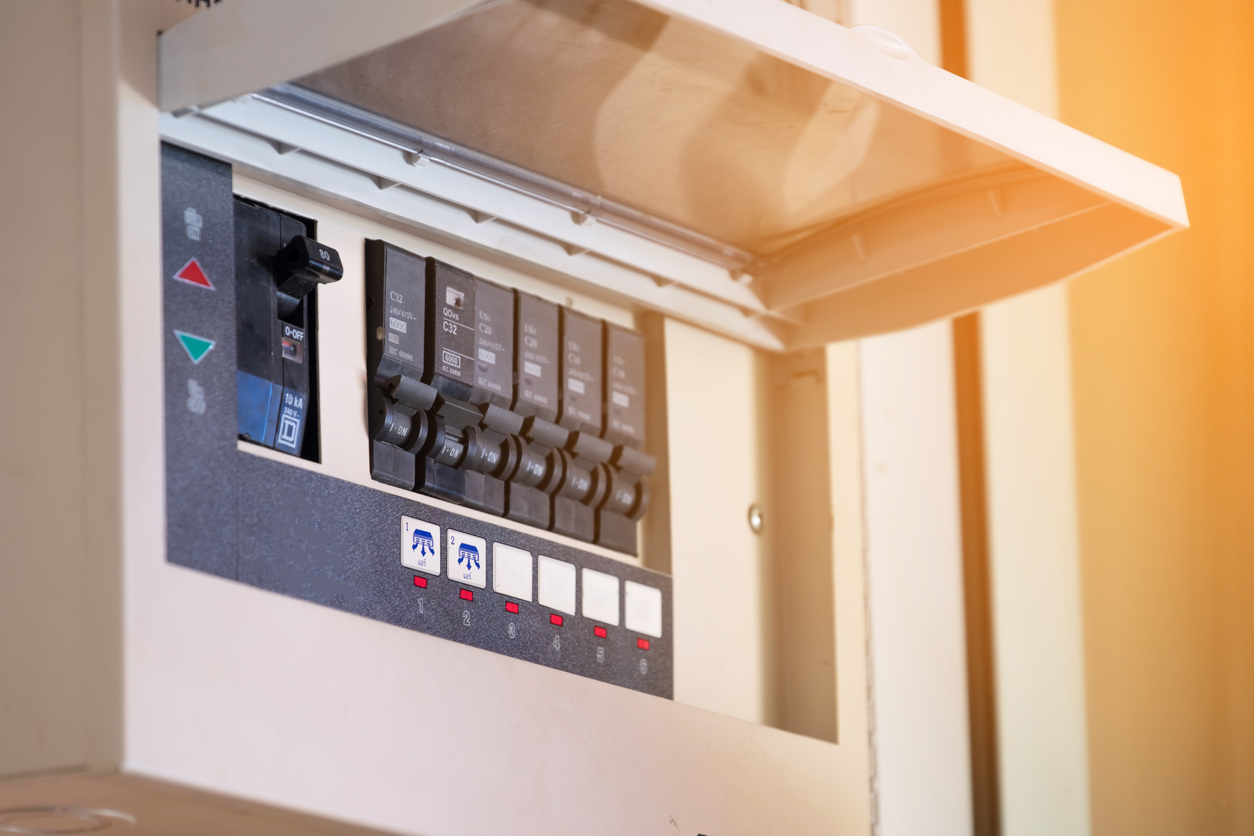In any workplace that uses electricity—which is to say, nearly all of them—safety starts at the switchboard. One of the most important tools in the electrical safety toolkit is the humble yet powerful RCD, or Residual Current Device.
It may be small, but the RCD does something mighty: it saves lives. And to do that reliably, it needs to be tested regularly. In this post, we’re breaking down what RCD Safety Switch Testing is, why it matters, and how it helps protect not just your people, but your premises and equipment, too.
What is an RCD and what does it do?
An RCD (Residual Current Device) is a safety switch designed to quickly shut off power when it detects an imbalance in the electrical current. In plain English: if electricity starts flowing somewhere it shouldn’t—like through a person—the RCD cuts the power fast enough to prevent serious harm or even death.
This can happen in everyday scenarios: someone accidentally cutting through a power cord, a faulty appliance leaking current, or even moisture getting into a socket. Without an RCD in place, these situations can easily turn fatal.
Why does RCD Safety Switch Testing matter?
RCDs only work when they’re functioning correctly—and like all mechanical or electrical devices, they can wear down or fail over time. Dust, humidity, electrical surges, and age can all impact how an RCD performs.
That’s where RCD Safety Switch Testing comes in. Regular testing confirms that the RCD will trip as it should, within milliseconds, during a fault. It’s not just a best practice; in many industries and commercial environments, it’s a legal requirement.
If you’re running a workplace, especially one with tools, machinery, or high foot traffic, the consequences of a faulty RCD could be catastrophic. Testing ensures you’re not taking that risk.
How does testing work—and who should do it?
During a professional RCD Safety Switch Testing service, a qualified technician uses specialised equipment to simulate a fault and measure the RCD’s response time. The test confirms whether the device trips quickly enough to meet regulatory standards.
Importantly, this kind of testing isn’t something to attempt on your own. It requires the right tools and training to avoid damage to the switch or unintended power disruptions. More critically, working with electrical systems always comes with risk. For the safety of your staff and your systems, this job is best left to professionals.
What happens if you don’t test your RCDs?
The risk of not testing your RCDs is simple: you might assume they’re working when they’re not. An untested safety switch is a silent liability. If an accident occurs and the RCD fails to trip—or trips too slowly—the result can be injury, equipment damage, or worse.
There’s also the question of liability. In the event of an incident, failing to keep your electrical safety systems up to standard can leave you legally exposed. Insurance claims may be denied, and WorkSafe may investigate.
The cost of regular RCD Safety Switch Testing is a small price to pay compared to the cost of an accident.
How often should RCDs be tested?
The required frequency of testing depends on your workplace type, industry, and local safety regulations. In New Zealand, there are clear guidelines under AS/NZS 3760 for how often different environments need testing. For instance:
- Construction and demolition sites: every 3 months
- Manufacturing environments: every 6 months
- Offices and lower-risk settings: annually
A qualified test and tag provider can help assess your site and set up a tailored schedule that keeps you compliant and safe.
How Jim’s Test & Tag Can Help Your New Zealand Business
RCD Safety Switch Testing is more than a checkbox—it’s an essential part of your workplace safety strategy. These devices are your last line of defense against electric shock and fire hazards. Making sure they work isn’t just about compliance; it’s about protecting the people who walk through your doors each day.
At Jim’s Test and Tag New Zealand, we’re here to make that simple. With reliable testing services, clear reporting, and a focus on keeping your workplace safe, we help you take care of what matters most. Here are the ways that we can support your business:
- Reminder Service – Never miss a test again. We notify you in advance when your electrical appliances are due for retesting, ensuring continued compliance.
- Data Management Service – We maintain detailed records of all PAT results, allowing you to track compliance and testing history effortlessly. Our documentation is invaluable for audits and inspections.
- Repairing Faulty Items – If any of your appliances fail an inspection, we can either repair them or work with trusted partners to ensure they meet safety standards quickly.
- Safe Work Method Statements (SWMS) – We conduct thorough risk assessments and provide SWMS outlining the steps we take to minimize hazards, ensuring your employees and customers remain safe.
If you’re not sure where to start or want peace of mind that everything’s up to standard, Jim’s Test and Tag NZ can help. We’ll work with you to create a testing schedule that suits your workplace and keeps you compliant—no guesswork, no stress.
Call us today at 0800 454 654 to learn more about our services or request a free quote via our online form.







